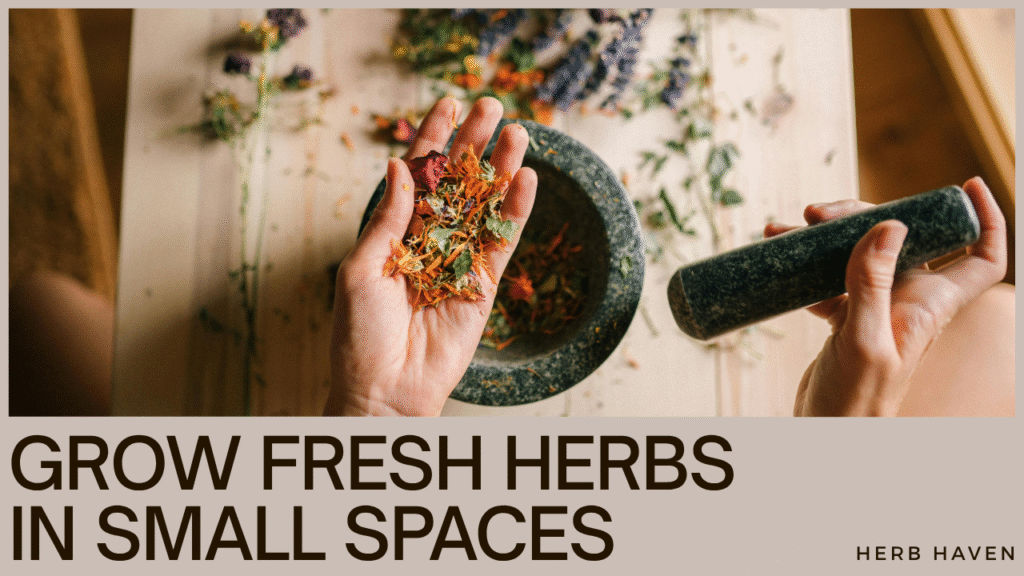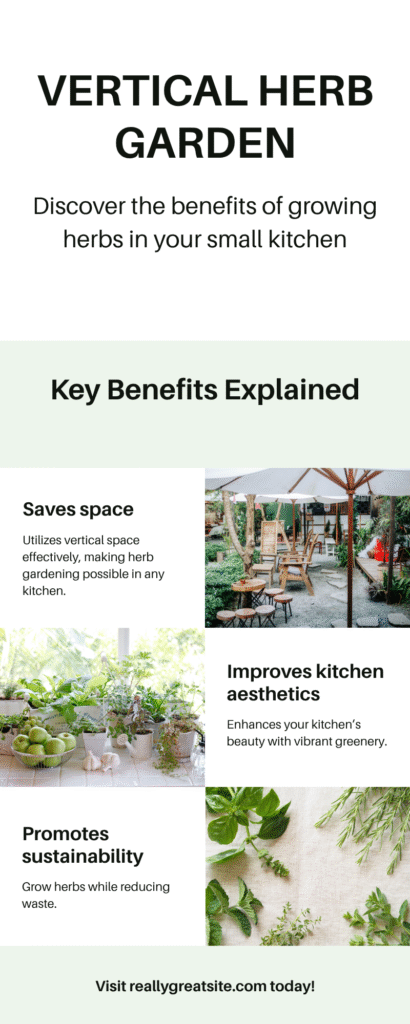Transform Your Kitchen into a Vibrant Herb Oasis: Indoor Vertical Herb Garden Guide
Transform your kitchen into a vibrant herb oasis with a vertical kitchen herb garden. Discover top systems, herbs, care tips, and expert insights to grow fresh herbs year-round, even in tiny spaces.
Why Vertical Kitchen Herb Gardens Are a Game-Changer
When I moved into a 400 sq. ft. apartment in downtown Chicago, I never imagined I’d be plucking fresh mint for mojitos or snipping basil for pasta — all from my kitchen wall.
Vertical kitchen herb gardens solve multiple problems at once. They maximize space by converting unused walls or corners into lush, productive green zones. The flavor of just-cut herbs is incomparable, and having them within arm’s reach transforms cooking into a fragrant, joyful ritual. Bonus? These gardens infuse your space with calming greenery and even help purify indoor air.
Best Vertical Garden Systems for Kitchens

Wall-Mounted Planters
These sleek units attach directly to walls or cabinets and come in modular designs. Pros: Ultra space-saving, visually striking, often self-watering. Cons: May require drilling or strong adhesive anchors; not ideal for rental restrictions.
Curious how this space-saving wonder comes to life? Setting up your vertical kitchen herb garden is simpler than you might think! Typically, these systems involve stacking modular planters or using wall-mounted pockets, often with built-in irrigation or wicking systems for easy watering. The exact configuration can vary from sleek, minimalist designs to more robust, multi-level units, but all aim to maximize your growing potential in a small footprint. Watch our quick video to see a typical setup in action and get inspired to start your own!
Tiered Stands
Freestanding, stacked designs perfect for corners or near windows. Pros: No wall damage, easy to relocate, often include built-in trays. Cons: Take up some floor space, less ideal for ultra-small kitchens.
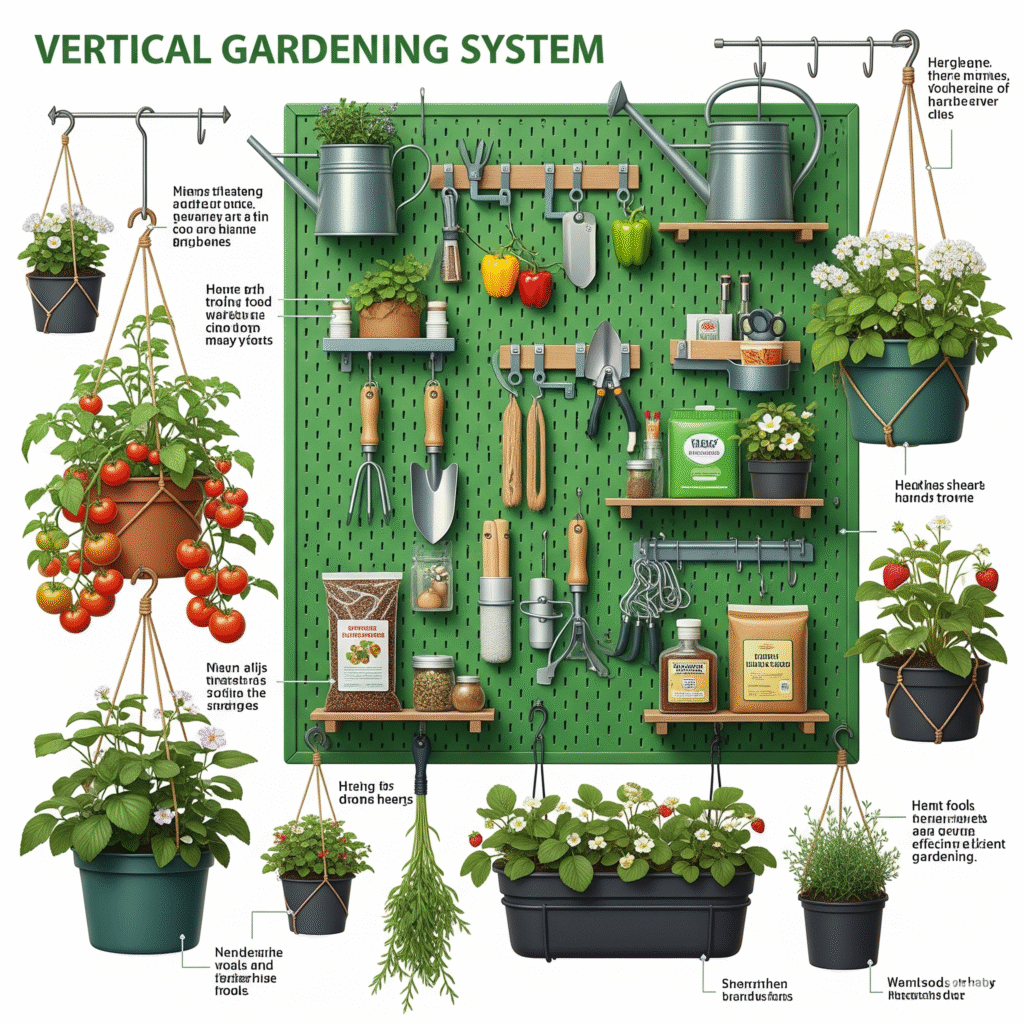
Hanging Pocket Planters
Fabric-based systems with multiple pockets that cradle soil or grow bags. Pros: Lightweight, breathable, affordable.Cons: Dry out faster; require consistent watering.
DIY Pegboards & Ladders
Up-cycled ladders or pegboards (think IKEA hacks) let you customize your own stylish system.
Benefits of a Vertical Herb Garden in a Small Kitchen
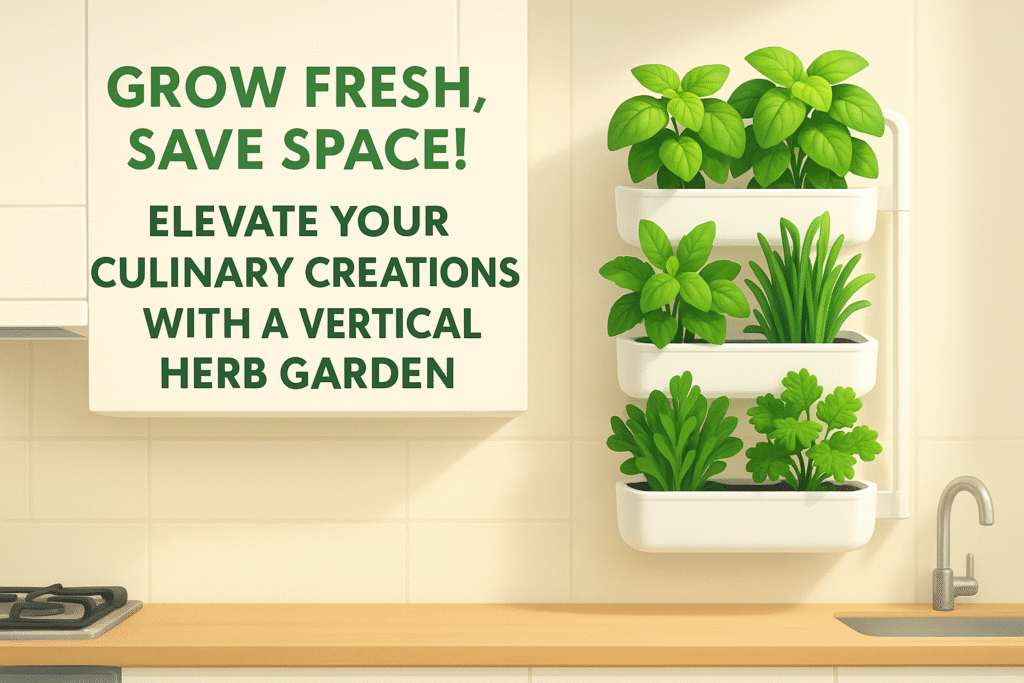
This section highlights how a vertical kitchen herb garden is the ultimate space-saving solution for small kitchens. In urban living or compact homes, counter and windowsill space is precious. Our infographic visually demonstrates how these gardens utilize vertical real estate, transforming an unused wall into a thriving green space. Imagine having fresh herbs at your fingertips without sacrificing an inch of your limited prep area! It’s a game-changer for anyone struggling with a cramped kitchen.
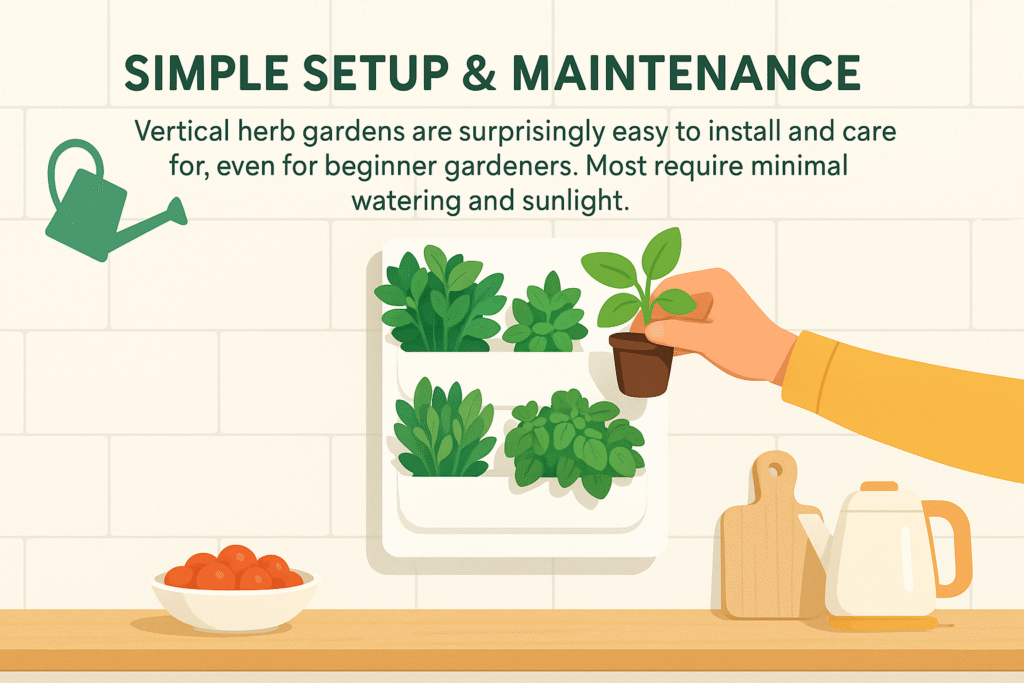
There’s nothing quite like the taste of freshly picked herbs, and this section emphasizes just that. Forget about wilted, store-bought herbs that lack flavor and vibrancy. With a vertical kitchen herb garden, you can snip basil, mint, or chives just moments before adding them to your dish. This ensures peak flavor, aroma, and nutritional value, elevating your homemade meals to a whole new level. Experience true farm-to-table freshness, right in your own kitchen!
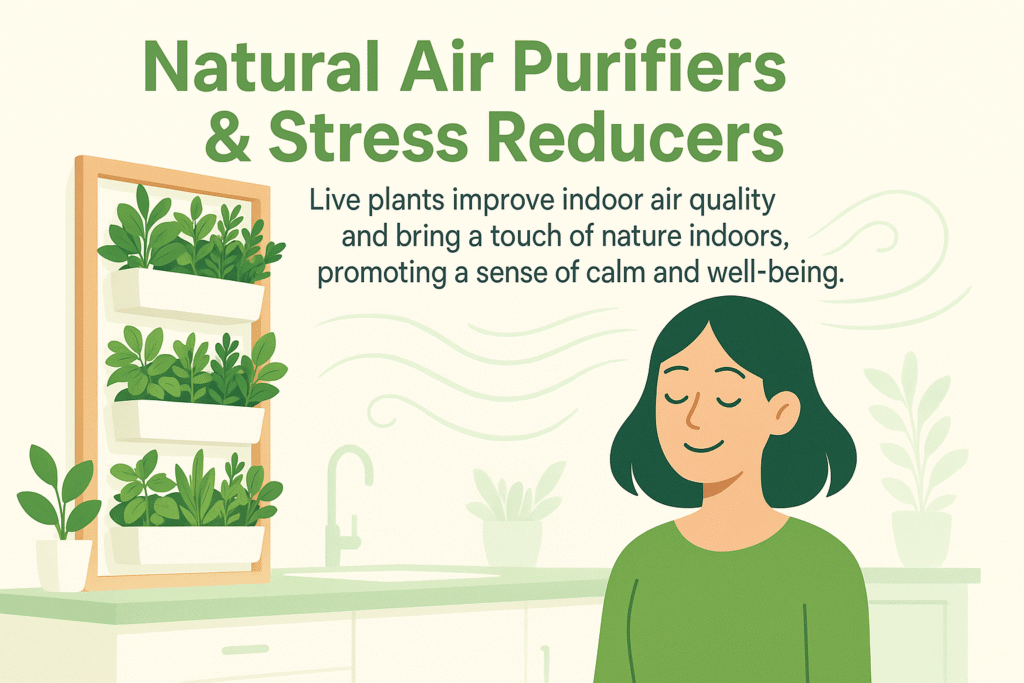
Beyond convenience, a vertical kitchen herb garden offers significant economic and environmental benefits. This part of the infographic illustrates how growing your own herbs is far more cost-effective than repeatedly buying pre-packaged ones from the grocery store. Plus, it’s a fantastic way to reduce food waste and minimize your plastic consumption. Embrace a more sustainable lifestyle by cultivating your own delicious, waste-free ingredients.

Did you know that bringing plants indoors can significantly improve your well-being? This section focuses on the often-overlooked benefits of having living plants in your kitchen. Herbs not only add beauty but also act as natural air purifiers, helping to filter toxins and improve air quality. Furthermore, studies show that being around greenery can reduce stress and promote a sense of calm. Your vertical kitchen herb garden isn’t just for cooking; it’s a mini oasis for your mind and body.
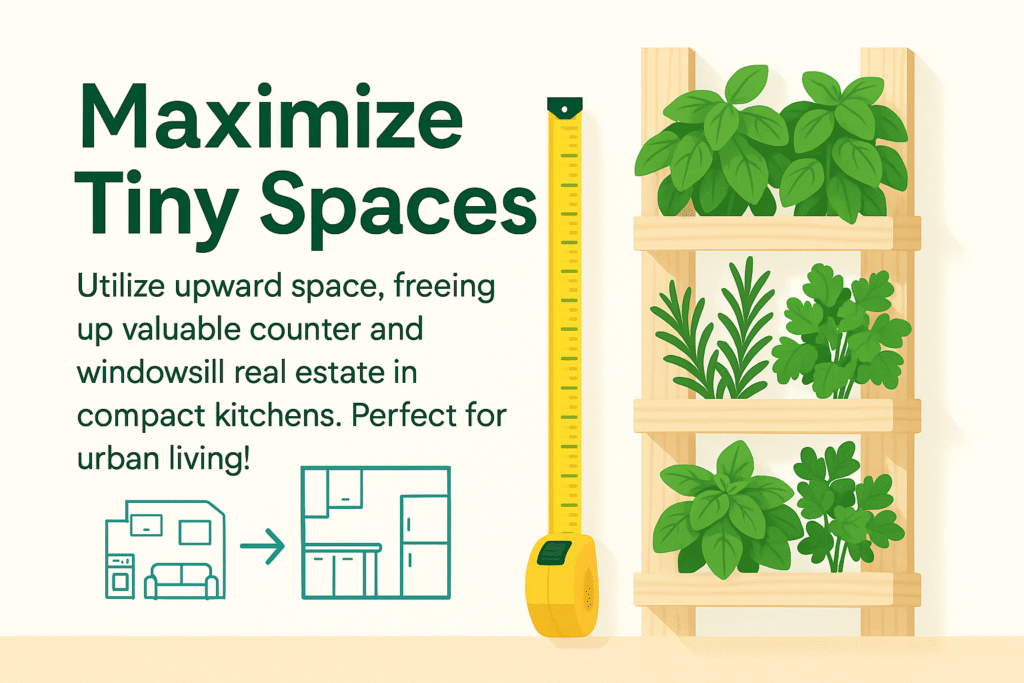
Worried you don’t have a green thumb? This final section reassures you that vertical kitchen herb gardens are surprisingly easy to set up and maintain. Our infographic conveys the simplicity of these systems, making them accessible even for gardening novices. Most vertical gardens require minimal watering and can thrive with adequate sunlight or a simple grow light. It’s an effortless way to introduce more freshness into your home without a lot of fuss.
Top Herbs to Grow Indoors Vertically
Sun-Loving Favorites
Shade-Tolerant Herbs
- Mint: Moist soil, partial shade. Prolific but invasive — trim often.
- Parsley: Slow grower, long lifespan. Nutrient-rich.
- Chives: Low maintenance, regrow well after trimming.
How to Set Up Your Vertical Herb Garden (Step-by-Step)
- Choose the Right Spot: Find a wall or corner with 4–6 hours of indirect sunlight.
- Pick the Right System: Wall-mounted for tiny spaces; freestanding if you want flexibility.
- Select Herbs Based on Light & Use: Start with 3–5 versatile, beginner-friendly herbs.
- Install & Secure Planters: Use anchors, adhesive strips, or brackets for stability.
- Add Drainage Layers: Line the bottom with pebbles or mesh to prevent root rot.
- Use High-Quality Potting Mix: Choose organic blends with perlite or coco coir.
- Label & Track: Mark each herb and note watering needs and growth habits.
Light, Water, Soil & Fertilizer: The Core of Herb Health
Lighting:
South- or east-facing windows are best. In dim kitchens, LED grow lights ensure year-round growth.https://www.rhs.org.uk/advice/understanding-plants/how-plants-use-light-to-grow
Watering:
Check soil moisture by touch. Water only when the top 1 inch feels dry. Avoid misting in poorly ventilated areas to prevent mildew.
Soil:
Use potting mixes designed for containers with good airflow. Avoid using heavy outdoor garden soil.
Fertilizing:
Feed herbs with diluted organic liquid fertilizer every 2–3 weeks. Avoid overfeeding; too much growth can reduce essential oil concentration, leading to bland herbs.
Common Mistakes & Troubleshooting
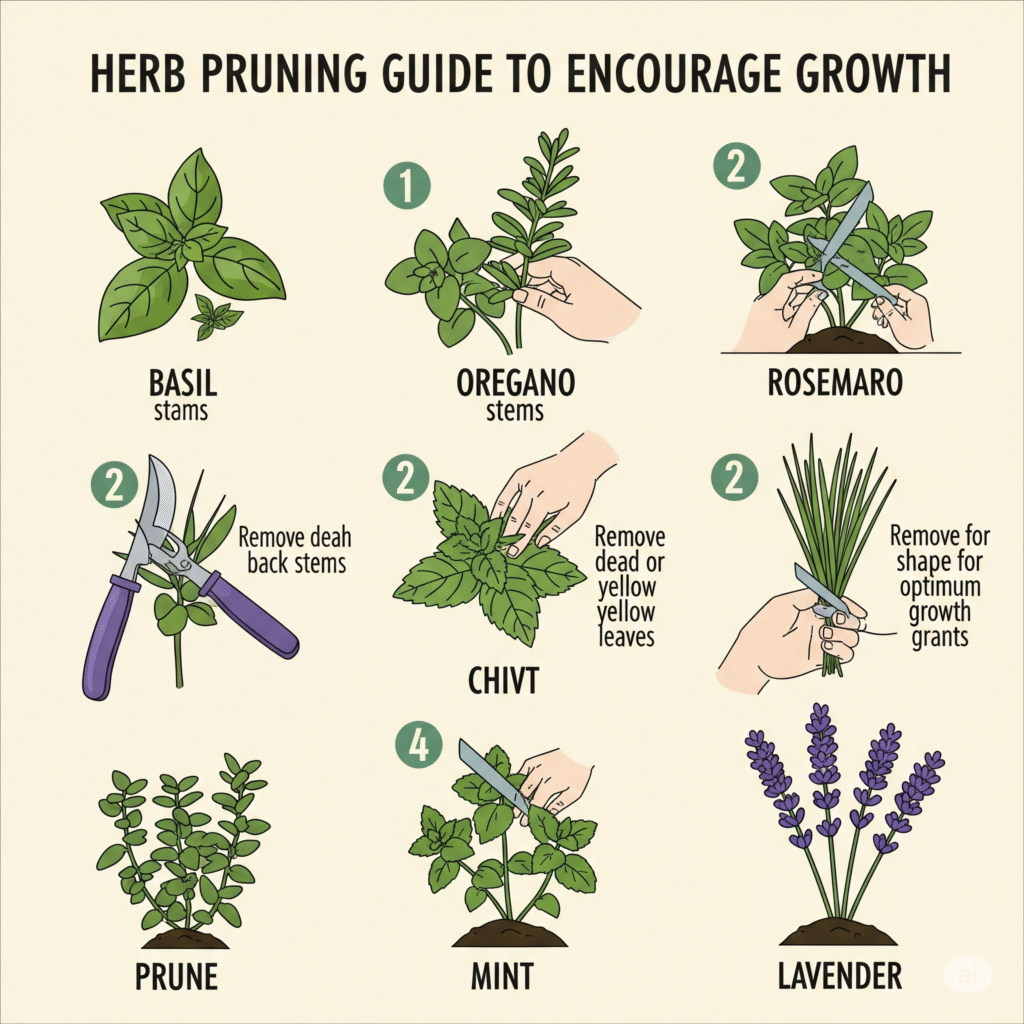
Conclusion: A Greener, Tastier Kitchen Starts Today
You don’t need a backyard to enjoy fresh herbs. With a vertical kitchen herb garden, you can harvest flavor daily, add style to your kitchen, and connect with nature right at home.
Ready to grow? Start small, observe, and enjoy your harvests!
Vertical Herb Garden Checklist
FAQs
Q1. What are the easiest herbs for beginners to grow indoors? A: Basil, mint, parsley, and chives — all thrive in pots and require minimal fuss.
Q2. Do I need grow lights for herbs in a kitchen? A: Only if your space gets less than 4 hours of light. LEDs are effective and energy-efficient.
Q3. Can vertical planters damage kitchen walls? A: Not if you use adhesive hooks, suction cups, or pegboard systems designed for renters.
Q4. How often should I water indoor herbs? A: Typically 1–3 times weekly, depending on season and indoor temperature.
Q5. What fertilizer is best for indoor herbs? A: Diluted organic liquid options like fish emulsion or seaweed extract every 2–3 weeks.
Q6. How do I keep pests away from indoor herbs? A: Wipe leaves regularly and spray neem oil to deter pests naturally.
Q7. Can I grow vegetables with my herbs? A: Yes! Cherry tomatoes and baby peppers can thrive in taller, light-rich vertical kitchen herb garden systems.
Vertical Garden: An Expert’s Guide to Growing Lush, Healthy Plants from Home Beautiful:
The Ultimate Guide to Raised Bed Gardening for Small Yards
